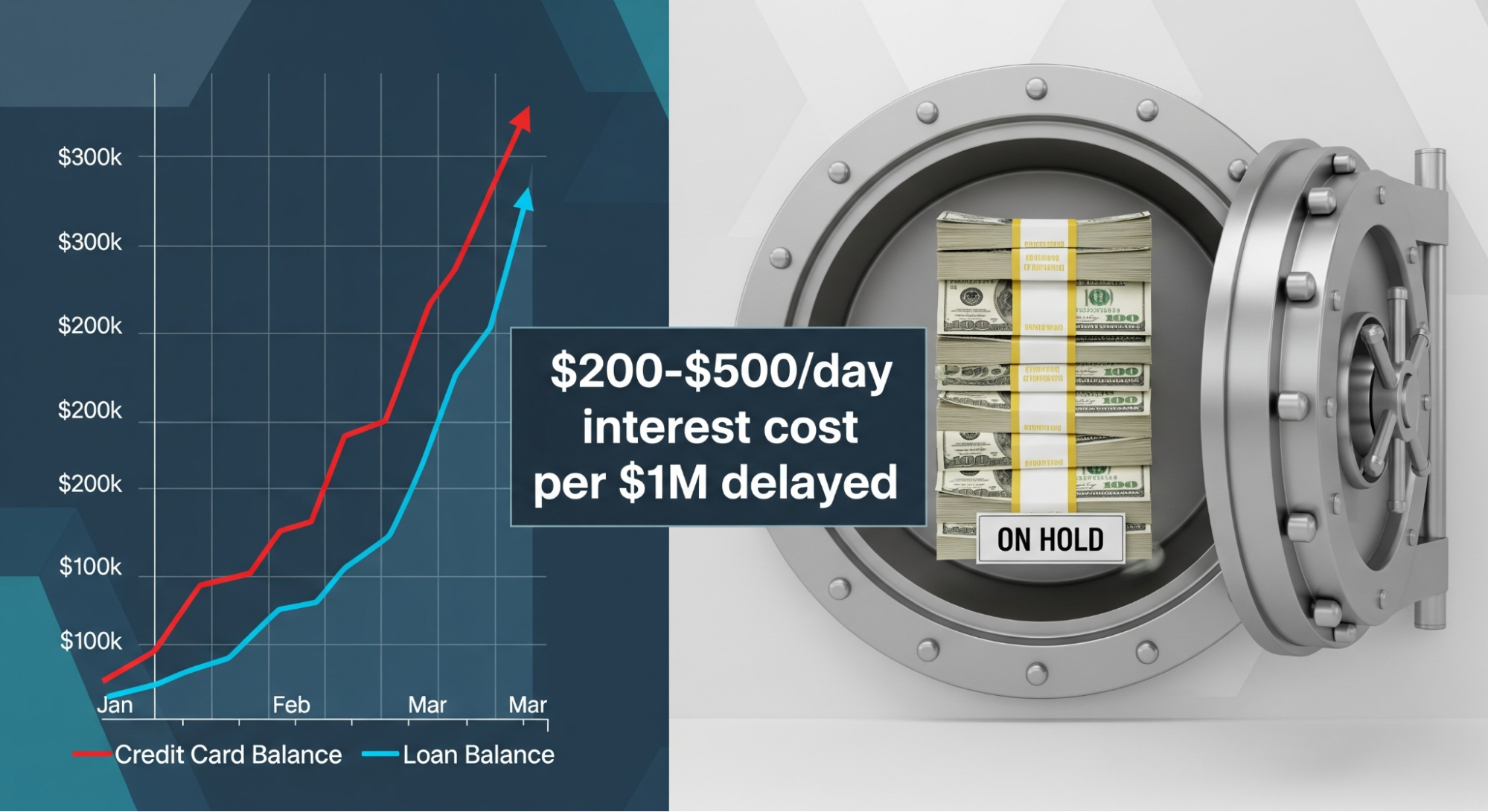In today's fast-paced business environment, efficient financial management is crucial for success. Two key processes that are often intertwined are invoice demand and payment processing. While they might seem like separate tasks, understanding their connection and how Salesforce automation can streamline both is vital for businesses seeking to maximize efficiency and profitability.
Invoice Demand: The Request for Payment
Invoice demand is the process of requesting payment from a customer for goods or services delivered. It encompasses several steps, from generating the invoice itself to ensuring timely delivery and tracking payment status.
Here's a typical invoice demand workflow:
- Order Placement: A customer places an order for goods or services, often through an online store, a sales representative, or a direct order.
- Delivery/Completion: The supplier fulfills the order by delivering the goods or completing the service.
- Invoice Generation: The supplier creates an invoice, which is a detailed document summarizing the products or services provided, their quantity, pricing, and payment terms. This includes the due date, payment methods accepted, and any applicable discounts or taxes.
- Invoice Delivery: The invoice is sent to the customer via email, mail, or an online portal, making it accessible and clear.
Payment Processing: The Journey of Funds
Payment processing, on the other hand, involves the steps needed to receive and settle a payment. It covers the movement of funds from the customer's account to the supplier's account.
Here's a breakdown of the payment processing workflow:
- Payment Initiation: The customer initiates payment, typically through a payment method like a credit card, debit card, bank transfer, or an online payment platform.
- Payment Authorization: The payment gateway or financial institution verifies the customer's funds and authorizes the transaction.
- Payment Processing: The payment is processed, and funds are transferred from the customer's account to the supplier's account.
- Confirmation: The customer and supplier receive confirmation of the successful payment.
The Power of Salesforce Automation:
Salesforce financial automation tools can significantly streamline both invoice demand and payment processing, offering a range of benefits:
1. Automated Invoice Generation: Salesforce can automatically create invoices based on order details, pricing, and payment terms, saving time and reducing manual errors.
"According to a study by IDC, companies using Salesforce financial automation report an average of 30% reduction in invoice processing time."
2. Automated Invoice Delivery: Invoices can be sent electronically via email or integrated portals, making it easier for customers to receive and access them.
"A study by Salesforce found that over 80% of Salesforce users leverage automated invoicing functionalities."
3. Payment Gateway Integration: Salesforce can integrate with payment gateways, allowing businesses to accept online payments directly within the platform, making payment processing faster and more convenient for customers.
"More than 70% of businesses using Salesforce integrate with payment gateways."
4. Payment Tracking and Reconciliation: Salesforce can track payment status, automate payment reminders, and automatically reconcile payments with invoices, ensuring accuracy and reducing manual effort.
"Nearly 60% of Salesforce users utilize automated workflows for expense management, including payment tracking."
Addressing Common Challenges:
While Salesforce financial automation offers significant advantages, some challenges remain. These include:
- Integration Complexity: Many businesses use different financial systems, such as ERPs and accounting software, which can make integration with Salesforce complex.
- User Adoption and Training: Employees may be resistant to adopting new automation tools, especially if they're used to manual processes.
- Customization and Configuration: Businesses may need to customize workflows and processes to match their specific requirements, which can require technical expertise.
- Security and Compliance: Financial data is sensitive, and companies must ensure that automation tools meet stringent security standards and comply with regulations.
- Cost and ROI: Implementing automation involves costs, and demonstrating the return on investment can be challenging.
REDA Pay is a cutting-edge Salesforce banking automation solution tailored to enhance payment processing and financial management for organizations. Since it is native to Salesforce, it delivers a unique advantage, enabling organizations to fully harness the platform’s capabilities for optimized financial operations. Additionally, REDA Pay is designed to be highly cost-effective, ensuring minimal impact on your bank’s balance.
REDA Pay + Salesforce:
REDA Pay is native to Salesforce, acting as a natural extension of the platform. This offers several key advantages:
- Unified Data Platform: REDA Pay leverages Salesforce's data infrastructure, creating a single source of truth for financial information. This eliminates data silos, ensuring that all relevant data - from customer profiles to transaction histories - is readily accessible and accurate.
- Centralized Workflow Management: REDA Pay seamlessly utilizes Salesforce's workflow engine. This allows for the automation of repetitive tasks, such as payment approvals, reconciliations, and notifications, without the need for separate systems or complex integrations.
- Enhanced Customer Relationship Management (CRM): REDA Pay powered with Salesforce CRM provides a 360-degree view of customers, allowing financial institutions to tailor communication, services, and solutions based on individual needs and preferences. This enriched customer experience can lead to greater loyalty and satisfaction.
- Real-Time Visibility: REDA Pay provides real-time visibility into payment processing, allowing institutions to track transaction status, analyze payment trends, and make informed decisions based on up-to-date data. This empowers proactive risk management and strategic planning.
- Streamlined Compliance: REDA Pay simplifies compliance by using Salesforce's compliance features. Automated audits, documentation, and tracking ensure adherence to industry regulations, reducing the risk of penalties and enhancing operational efficiency.
How REDA Pay Helps with Invoice Demand and Payment Processing
REDA Pay seamlessly uses Salesforce to enable a streamlined approach to both invoice demand and payment processing:
- Invoice Automation: REDA Pay processes the invoices generated by any native invoice generation systems based on predefined criteria. This reduces manual effort, minimizes errors, and accelerates the billing process.
- Payment Processing Integration: REDA Pay's seamless integration with payment gateways allows organizations to accept payments directly within Salesforce, providing a convenient and secure experience for customers.
- Automated Payment Routing: REDA Pay automates payment routing based on customizable rules, ensuring that funds are directed accurately to the designated accounts.
- Real-Time Reconciliation: REDA Pay automatically reconciles payments with invoices, minimizing manual effort and ensuring accuracy. This also provides real-time visibility into cash flow and financial performance.
- Customer Communication: REDA Pay simplifies customer communication by integrating with Salesforce's communication tools. Automated notifications and alerts keep customers informed about payment status and transactions.
Example Scenarios
Scenario 1: Streamlined Invoice Management:
- A bank receives an order for a new financial product.
- An invoice is generated by invoice generation systems based on the product details and payment terms.
- The invoice is sent electronically to the customer via Salesforce's email integration.
- The bank tracks the payment status within Salesforce, receiving automated reminders if the payment is overdue.
Scenario 2: Enhanced Payment Processing:
- A customer initiates a payment for a loan installment using their online banking portal.
- REDA Pay processes the payment securely through Salesforce, verifying the funds and routing them to the correct account.
- The customer receives a confirmation email within Salesforce, acknowledging the successful payment.
- The bank's finance team receives real-time updates on the transaction, including reconciliation data, within Salesforce.
Conclusion
REDA Pay uses Salesforce’s features to empower organizations to optimize financial operations, enhancing efficiency, improving customer experience, and driving profitability. By leveraging the power of Salesforce and REDA Pay, organizations can embrace the future of financial management, where automation and data-driven insights pave the way for success.

.png)











.jpg)
.avif)


.png)




